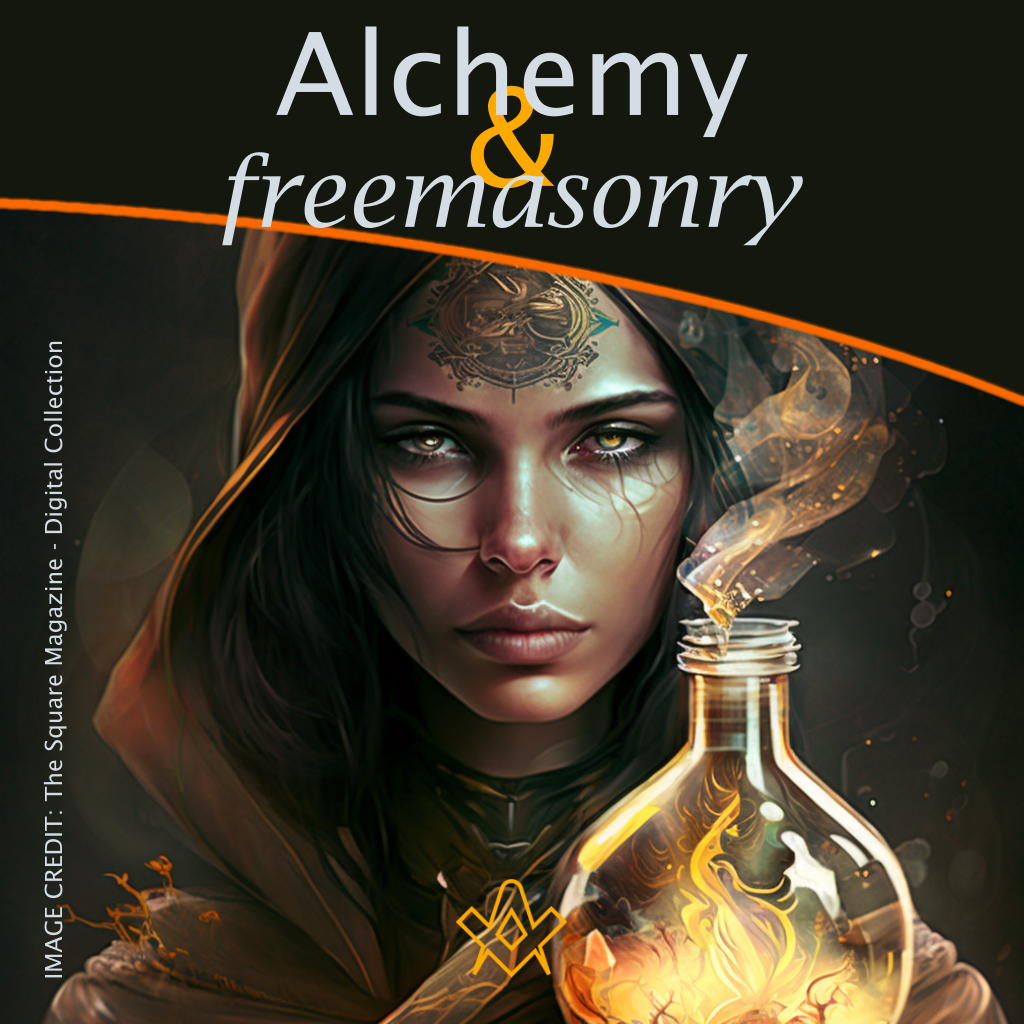Alchemy, like Freemasonry, has two aspects, material and spiritual; the lower aspect being looked upon by initiates as symbolic of the higher. “Gold” is used as a symbol of perfection and the earlier traces of Alchemy are philosophical.
A Lecture read before the Albert Edward Rose Croix Chapter No. 87 in 1949.
by Ill. Bro. S. H. Perry 32°
The alchemists claimed descent from Hermes: and the Hermetic writings from Egypt of the first centuries A.D. are quoted, frequently word for word.
These writings have nothing to do with metallic transformations: they are deeply philosophical and tend to inculcate scorn of the material world, especially of the physical body.
In all probability the chemical or material side is derived from Arabia, and has been introduced to hide the esoteric teaching of true Alchemy.
The materialists were called Puffers ” and it is from them that modern chemistry. has been developed. carefully hidden from the profane “; so carefully that most students of their ancient books were deluded into the belief that there was no hidden meaning.
Indeed many so-called alchemists themselves mistook the letter for the spirit, wasting their lives in a vain search for wealth in spite of repeated warnings such as Our Gold is not the gold of the vulgar.”
In true Alchemy the conversion of baser metals into Gold symbolises the raising of the lower parts of our human nature to Spiritual Perfection.
Post-reformation alchemists like Jacob Boeheme (sic) completely ignored the material side and used the chemical terms in a purely mystical sense. The Alchemist hid his secret teaching under the guise of chemical symbols.
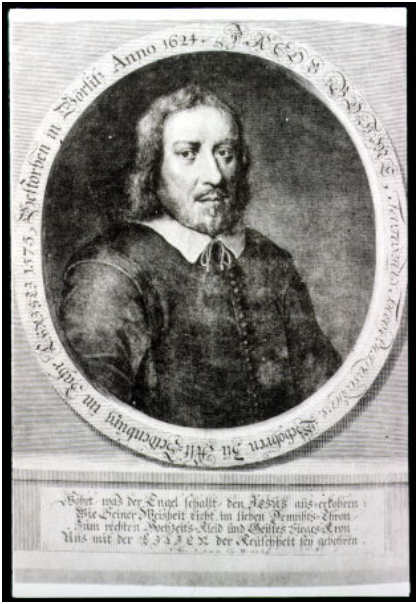
Jacob Böhme from Theosophia Revelata (1730)
IMAGE LINKED: wikimedia Attribution 4.0 International (CC BY 4.0)
For it is most profound Philosophy,
The subtill science of Alchemy
(Thomas Norton mid 15th century in his “Ordinal of Alchemy”, who states definitely that Freemasons studied alchemy.) The chemical symbols were a “blind”, as our masonic symbols are, having no value in themselves but only as symbols. Their search was for Perfection.
Jean d’Espagnet, the French Alchemist (1600-1630), wrote in “The Hermetic Arcanum”: “The beginning of this Divine Science is the fear of the Lord, and its end is Charity and Love towards our neighbour.”
Our work commences with an assertion of our trust in God and is really completed with the Five Points of Fellowship.
Raymond Lully, the Alchemist and Christian Martyr (born 1235), writing of the mystery of the Philosopher’s Stone, says: “It is found in desolate houses and there is shut up in it a great secret and a treasure enchanted.” For “desolate houses” put “poor and penniless”, etc., as we start on our journey in search of this lost secret.
The use of Gold as a symbol is indeed ancient – “When he hath tried me I shall come forth as Gold.” (Job. xxii. 10).
In later days the Persian Poet and Mystic Hafiz (14th century) wrote: “Like men of the Path, wash thy hands of the copper of thine own existence so that thou mayest acquire the Alchemy of Love and become pure Gold.” True Alchemy, also hidden in some of our higher degrees.
The famous alchemist, Bonus of Ferrari (Ciro. 1330), wrote: “Our art speaks of all things by analogy”, and as our secrets have not to do with the external world, but with the inner Self, we use signs and symbols “by analogy”.
Vows of secrecy were insisted on by all alchemists perhaps because their philosophy did not agree with the various religions of their times.
“The Turba Philosophorum”, the earliest Latin work on the subject, gives another reason which will appeal to every earnest student: If we told our secret to the profane they would be amused,” reminding us of the greater saying, “Cast not your pearls before swine.”
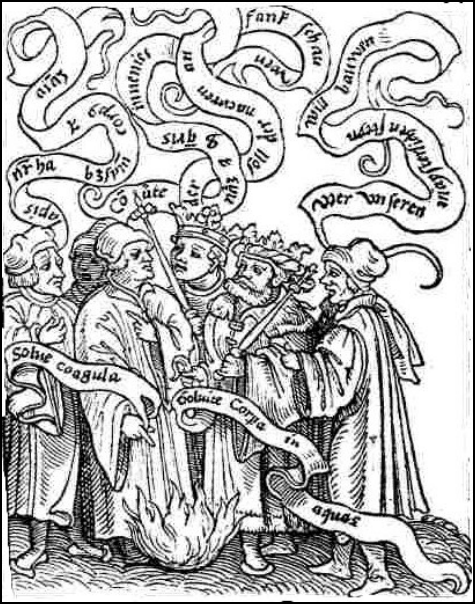
“The Turba Philosophorum”
IMAGE LINKED: wikimedia Attribution 4.0 International (CC BY 4.0)
Although oaths of secrecy were required, there is no mention of bodily penalties, neither are these referred to in the famous Regius manuscript, a masonic poem of about 1390.
Offenders are to be handed over to the sheriff and punished under the ordinary laws of the realm. It is inconceivable that Kings, Barons or Abbots would surrender their ancient feudal rights and privileges to any company or society of men such as freemasons.
The members of the Court of Admiralty of the Humber in the time of Henry V were styled “King’s Councillors”, and therefore held the power of life and death in their own hands.
A solemn warning against rashness and haste is invariably given by alchemists. “Haste is of the Devil’s part”, says Norton in his “Ordinal of Alchemy”: no E.A. can ever forget our symbolic illustration of this warning.
Although it is not to the point in this discussion, the following extract from “The Gnostics and their Remains”, by C. W. King, is of interest:- “The use of the mazzer, a huge mallet, was retained at Rome for the execution of the more atrocious criminals, until the recent introduction of the guillotine.”
The three Great Lights in Alchemy were:
(1) The Sun, the symbol of Spirit. The point within the circle;
(2) The Moon, symbol of the Soul. The semi-circle. The human mind;
(3) The Earth, symbol of the Body. The material world, the square or cube.
These are the three great lights of ancient freemasonry. This perfect symbolism has been weakened by the comparatively modern introduction of three other lights, making six in all; and six is not even a masonic number.
Why did we ever class the man-made square and compasses (even as symbols) above the God-made Sun and Moon, contradicting the V.S.L. in Gen. 1. l6?
The replacing of the Earth by the W.M. proves that our symbolism was hopelessly misunderstood by the uninspired arrangers of our modern ritual.
“That upon which Light shines is itself a Light.”
We must also bear in mind that our veneration for the V.S.L. is post-reformation. Previous to this its place was always taken by “Holy Church” as in the Regius manuscript. (Ages before this the Pharisees had made the Pentateuch of none effect by their traditions.)
Basil Valentine (1659) in “L’Azoth des Philosophes” has an illustration containing a triangle with the point downwards at the upper angles are the Sun and the Moon, described as “Anima” and “Spiritus” at the lower angle isa cube with the word “Corpus”. Likewise Norton in his “Ordinal of Alchemy” writes:
“Therefore in our worke as Auctors teach us.” “There must be Corpus Anima and Spiritus.”
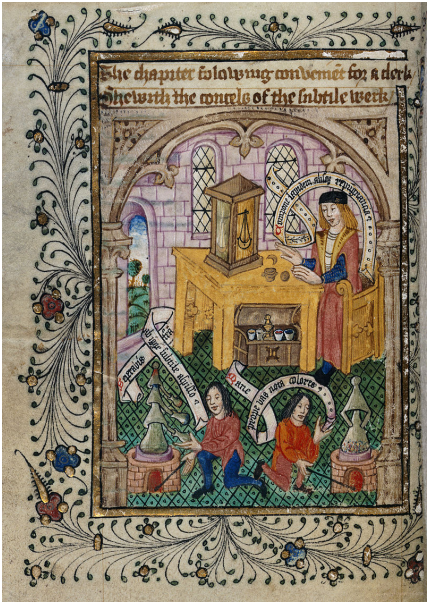
An alchemical master “sits at a table in the background surrounded by the symbols of alchemy: a silver crescent moon, a gold ball and a vessel used in experimentation”
IMAGE LINKED: wikimedia Attribution 4.0 International (CC BY 4.0)
The Rough Ashlar represents the body, or rather, as all our symbolism refers to the inner man and not to the external world of matter, it refers to the animal soul covered by accretions of evil, the animal passions.
In the Book of the Dead of Ancient Egypt one of the pass-words was “In Strength to bind the animal.”
The Gnostics of the 1st and 2nd centuries, B.C. and A.C., taught that the passions were “accretions” to the Soul, or as we say, “vain and unbecoming thoughts.”
When these are removed we find the perpend ashlar (not “perfect” for the cubic stone itself must eventually be changed. For this vile body must be changed into a spiritual body.)
In alchemy this is effected by “burning”. “Burn the copper and destroy its shadow,” says “The Turba Philosophorum”. Now copper is Spirit attached to matter, and its shadow is material or animal passions, the accretion of evil with its powerful attraction down to earth.
“But verge now downwards! Beneath thee lies a Precipice, sheer from the earth that draws one down a Stair of seven steps, beneath which lies the Throne of Dire Necesity.”(Chaldean Oracles).
In Freemasonry the symbol for “Earth” is the square; in Alchemy it is the Greek mundane cross of four equal arms. According to Proclus, Porphyry stated that among the Egyptians the letter X, surrounded by a circle, symbolised the mundane soul.
But Plato asserts that the soul is buried in the body as in a sepulchre (as we are taught in the Third Degree). Plutarch, in his vision of Aridarus, says “for you should know that the intercourse and conjunction of the soul with the body is contrary to Nature.”
Indeed, from at least the time of Plato, matter was looked upon as the place of the origin of evil.
“And that-which-is separated itself from that-which-is-not. And that-which-is-not is the evil which has manifested itself in matter.” (From the Bruce Gnostic Papyrus.)
“Separate the clean from the unclean – the Substance from its accidents”, i.e., the Supreme Reality from the delusions of the senses, which are dependent on the material world, “the substituted secrets” which form the Veil of the Temple, and hide the truth from our eyes.
“The Lord of the senses has externalised the senses wherefore we see the external world, and not the God within”, says the Indian “Yoga of Yarma”.“The first man is of the earth earthy.” V.S.L.
The Moon in Alchemy was the symbol of Soul, the human intellect. Now, in spite of all the poets whoever wrote, the moon is a dead thing, a memento mori, having no light of its own, capable only of reflecting the light of the Sun or the dim reflection of that light from Earth.
The human intellect has no light which does not reach it through the senses from the material world, or from spiritual illumination from on high. This higher illumination may be received only when the mind has attained stability. Stability by preventing the wanderings of the mental processes, is “death” to the mind which is essentially inconstant.
“Stand still and thou shalt see the salvation of thy God.” (Ex. XIV. 13.)
This higher illumination is the “Stone of the Philosophers”, the Stone which the builders (of the external world) rejected. It is Love which passeth all understanding; and is hidden from the wise (S.R.I.) and prudent (H.R.T) It is symbolised by H.A.B.
The Sun is the alchemical symbol of Love, i.e., Spirit and is itself symbolised by “the point within the circle” That centre form which all rays to the periphery are equal as we read in the very ancient Chaldean Oracles.
“For God – like a wise Architect – sits in the Centre of all.” (Thomas Vaughan in “Anthroposophia Theomizgica.”
Vaughan also writes: “I say that the true philosophers did find in every compound a double complexion circumferential and central. The circumferential was corrupt in all things, but in some altogether venomous; the Central not so, for in the centre of everything there was a perfect unity, a miraculous, indissoluble concord of Fire and Water”
Sir Thomas Browne, who claimed some knowledge of Alchemy, writes in “Urn Burial”: “Life is a pure flame, and we live by an invisible sun within us.”
Reminding us of the Pillar of Fire (B.) and the Pillar of Cloud (J); the past which burns up, destroys, everything and the future through which we cannot see. In the centre, where the two are “conjoined” is the stability of the eternal present.
Only when we cease our circumambulations are we taught the proper steps and eventually led to the East.
Had H.A.B. remained in the Centre, in the presence of the Most High, he would not have been “lost”.
“The Turba Philosophorum” speaks of Fire and Water, and adds: “The Air (Spirit) is placed between them to establish peace.” (W.Bro. A. E. Waite’s translation.)
“In the Chaldee-Persian tradition the worship of the Spiritual Sun, the Logos, with the natural symbol of the glorious orb of day, which was common in one form or other to all great cults, gradually permeated the popular forms of religion.
In the course of time Mithra, visible sun for the ignorant, the Spiritual Sun, Mediator between Light and Darkness (as Plutarch tells us) for the instructed, caused his rays to shine to the uttermost limits of the Roman Empire.” (Fragments of a Faith Forgotten, by G. R. S. Mead).
The supremacy of Spirit is indicated by the arrangement of our symbols on the open V.S.L.
First we have the symbol of earth dominating all.
Second the semi-circle (Moon) is indicated, and can be drawn.
Third, the complete circle with the point in the centre may be drawn with ease – dominating both mind and matter. The human mind tends to claim pre-eminence.
In Isaac Newton’s day, men thought that the wonderful discoveries of science would teach them all they needed, and would lead them “even to the Throne of God Himself.” We find traces of this heresy in the 2°. Newton had no such delusion. He likened himself to “a child gathering pebbles on the shore” (quoting Paradise Regained, Book IV.)
To-day we smile at Bro. Alexander Pope who eulogised Newton thus:-
“Nature and Nature’s laws lay hid in night. God said ‘let Newton be’ and all was light”, or words to that effect; but he was only expressing the idea of his period.
There were however prophets who refused to bow the knee to Baal. Blake wrote:
“How foolish it is to assert that man is born in only one degree, when that degree is receptive of the three degrees: two of which he must destroy. Is it not also evident that one degree will not open the other, and that science will not open Intellect.” By “intellect” Blake means Spiritual insight. Blake was a mystic and knew well the writings of such spiritual alchemists as Swedenborg and Boeheme.
To return to pure Alchemy let us take the symbols of the metallic elements as a study in pure symbolism.
GOLD, The point in the centre – Sun – Spirit or Love in Freemasonry hidden under the title of “Beauty”. H.A.B.
SILVER, the semi-circle – Moon – Intellect. S.R.I.
EARTH, the Greek Cross (replaced with us by the square). Matter, Brute strength, Ignorance.
IRON – Mars – Hatred – the animal soul – Spirit dominated by matter.
MERCURY – the mundane lodge – Intellect dominating Spirit, which is bound down to matter. Spirit crucified between mind and matter H.A.B. hidden or “lost” between S.R.I. and H.R.T.
ZINC – Jupiter – Intellect working on the material plane – modern science. (Note the absence of Spirit.)
COPPER – Venus – Spirit (Love) bound down to matter from which it must eventually be made free.
LEAD – Saturn – Intellect completely dominated by matter.
The “great work” of Alchemy as of Freemasonry is to make the spirit supreme, when the three parts of human nature will become one, though the complete Secret is not divulged in Craft Masonry.
(To draw these symbols, use the Circle for the Sun – the half-moon for the Moon – and the square cross for the earth. Thus Iron is represented by the circle dominated by the cross: Mercury by the circle with the half-moon above and the cross beneath: Zinc by the half-moon on a level with the cross: Copper by the circle above the cross: and Lead by the half-moon beneath the cross.)
Recent Articles: Esoteric Masonry
 Explore the multifaceted concept of the Divine across various cultural and religious perspectives. Delve into the intriguing deliberations on the Great Architect, Demiurge, and their roles in shaping our understanding of the cosmos, blending philosophical, theological, and metaphysical insights into a rich tapestry of human spirituality. |
 Unveiling the Mysteries: Explore the Enigmatic World of Rosicrucianism! Dive into the fascinating origins and teachings of the Rosicrucian tradition, shaped by the mythical figure Christian Rosenkreuz. Discover the secrets of alchemy, spiritual transformation, and esoteric knowledge. Unlock the hidden wisdom that has captivated seekers for centuries. Unleash your inner mystic today! |
 An Esoteric Interpretation of the Holy Royal Arch Delving into the profound mysteries of the Holy Royal Arch, Matt DA Fletcher offers an esoteric interpretation that challenges the conventional understanding of Freemasonry. While Craft Masonry is clear in its teachings, the Royal Arch remains an enigma for many. Fletcher's exploration uncovers the symbolic and philosophical depths of this degree, revealing its significance in the Mason's journey towards reintegration with the Creator. |
 Stoicism, Freemasonry, and the Modern Man Discover how the ancient wisdom of Stoicism can enrich Freemasonry and modern life. Dr. Chacón-Lozsán Francisco M.˙.M.˙. explores Stoic principles like virtue, resilience, and inner peace, offering practical insights for today's challenges. Learn how these timeless teachings can foster personal growth, ethical conduct, and emotional stability. |
 Explore the evolution of Masonic rites with the Universal Rite, a modern adaptation of the Ancient and Accepted Scottish Rite. Discover how it integrates contemporary principles, promotes intercultural dialogue, and ensures the timeless values of Freemasonry remain relevant in today's world. |
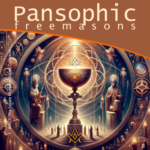 Unveil the secrets of Pansophic Freemasonry, a transformative journey through the ancient mystical traditions. Delve into the sacred realms of Rosicrucianism, Templar wisdom, Kabbalah, Gnosticism, and more. Discover the Graal, the sacred Grail that connects all esoteric paths. Embrace a holistic spiritual quest that reveals the profound mysteries of self and the universe. |
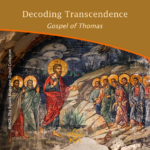 Dive into a spiritual journey where self-awareness is the key to enlightenment. The Gospel of Thomas and Masonic teachings converge on the profound truth that the path to transcendent wisdom lies within us. Embrace a diversified understanding of spirituality, emphasizing introspection as the gateway to a universally respected enlightenment. Explore, understand, transcend. |
 Philosophy the Science of Estimating Values Philosophy is the science of estimating values. The superiority of any state or substance over another is determined by philosophy. By assigning a position of primary importance to what remains when all that is secondary has been removed, philosophy thus becomes the true index of priority or emphasis in the realm of speculative thought. The mission of philosophy a priori is to establish the relation of manifested things to their invisible ultimate cause or nature. |
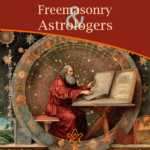 Unlocking the Mysteries: The Surprising Connection Between Freemasonry and Astrologers Revealed! Delve into the intriguing world of Freemasonry and explore its ties to astrological practices. Discover how these two distinct realms intersect, offering a fascinating glimpse into the esoteric interests of some Freemasons. Uncover the hidden links and unravel the enigmatic bond between Freemasonry and astrologers! |
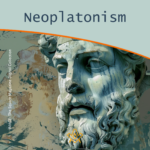 Neoplatonism, a philosophy with profound influence from the 3rd to the 6th century, merges Platonic ideals with Eastern thought, shaping Western and Middle-Eastern philosophy for two millennia. It emphasizes the unity of the individual with the supreme 'One', blending philosophy with theology and impacting major religious and philosophical movements, including Christianity and Islam. |
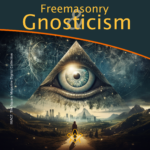 The enigmatic allure of Freemasonry's ancient rituals and Gnosticism's search for hidden knowledge capture the human spirit's endless quest for enlightenment. Between the stonemason's square and the Gnostic's divine spark lies a tantalizing intersection of philosophy, spirituality, and the pursuit of esoteric wisdom. Both traditions beckon with the promise of deeper understanding and moral elevation, inviting those who are drawn to unravel the tapestries of symbols and allegories. Whether through the fellowship of the lodge or the introspective journey of the soul, the paths of Freemasonry and Gnosticism represent a yearning to connect with something greater than ourselves—an impulse as old as time and as compelling as the mysteries they guard. |
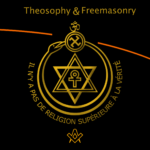 Embark on a journey through time and spirituality with our in-depth exploration of the Theosophical Society's Seal. This ancient emblem, rich with symbols, bridges humanity with the cosmos, echoing through the world's great faiths and diverse cultures. Our paper delves into the six mystical symbols, untangling their profound meanings and tracing their presence in historic art worldwide. Unaffiliated with worldly movements, these symbols open a window to esoteric wisdom. We also probe potential parallels with Freemasonry, seeking threads that might connect these storied organizations. Join us in unveiling the universal language of the spirit encoded within this enigmatic Seal. |
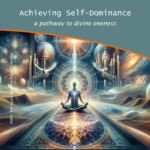 Discover the pathway to divine oneness through the concept of self-dominance. This thought-provoking essay explores the profound connection between self-control, spiritual growth, and achieving unity with the divine essence. With an interdisciplinary approach, it offers practical steps towards expanding consciousness and deepening our understanding of the divine. |
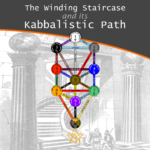 The Winding Staircase and its Kabbalistic Path The Winding Staircase in freemasonry is a renowned symbol of enlightenment. In this article, we explore its connection to Kabbalistic thought and how it mirrors the inner growth of a candidate as he progresses throughout his Masonic journey. From faith and discipline in Binah, to strength and discernment in Geburah, and finally to victory and emotional intuition in Netzach, each step represents a crucial aspect of personal development. Join us as we delve into the esoteric meanings of this powerful symbol. |
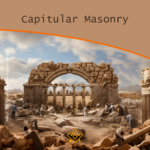 Unravel the mystic origins of Capitular Masonry, a secretive Freemasonry branch. Explore its evolution, symbolic degrees, and the Royal Arch's mysteries. Discover the Keystone's significance in this enlightening journey through Masonic wisdom, culminating in the ethereal Holy Royal Arch. |
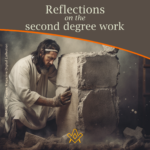 Reflections on the Second Degree Work Bro. Draško Miletić offers his reflections on his Second Degree Work – using metaphor, allegory and symbolism to understand the challenges we face as a Fellow Craft Mason to perfect the rough ashlar. |
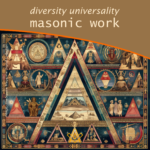 Diversity and Universality of Masonic Work Explore the rich tapestry of Masonic work, a testament to diversity and universality. Uncover its evolution through the 18th century, from the stabilization of Symbolic Freemasonry to the advent of Scottish rite and the birth of Great Continental Rites. Dive into this fascinating journey of Masonic systems, a unique blend of tradition and innovation. Antonio Jorge explores the diversity and universality of Masonic Work |
 Nonsense as a Factor in Soul Growth Although written 100 years ago, this article on retaining humour as a means of self-development and soul growth is as pertinent today as it was then! Let us remember the words of an ancient philosopher who said, when referring to the court jester of a king, “It takes the brightest man in all the land to make the greatest fool.” |
 Freemasonry: The Robe of Blue and Gold Three Fates weave this living garment and man himself is the creator of his fates. The triple thread of thought, action, and desire binds him when he enters into the sacred place or seeks admittance to the Lodge, but later this same cord is woven into the wedding garment whose purified folds shroud the sacred spark of his being. - Manly P Hall |
 By such a prudent and well regulated course of discipline as may best conduce to the preservation of your corporal and metal faculties in the fullest energy, thereby enabling you to exercise those talents wherewith god has blessed you to his glory and the welfare of your fellow creatures. |
 Jacob Ernst's 1870 treatise on the Philosophy of Freemasonry - The theory of Freemasonry is based upon the practice of virtuous principles, inculcating the highest standard of moral excellence. |
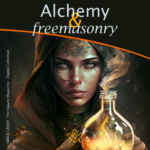 Alchemy, like Freemasonry, has two aspects, material and spiritual; the lower aspect being looked upon by initiates as symbolic of the higher. “Gold” is used as a symbol of perfection and the earlier traces of Alchemy are philosophical. A Lecture read before the Albert Edward Rose Croix Chapter No. 87 in 1949. by Ill. Bro. S. H. Perry 32° |
 The spirit of the Renaissance is long gone and today's globalized and hesitant man, no matter ideology and confession, is the one that is deprived of resoluteness, of decision making, the one whose opinion doesn't matter. Article by Draško Miletić, |
 A Mason's Work in the First Degree Every Mason's experiences are unique - here writer and artist Draško Miletić shares insights from his First Degree Work. |
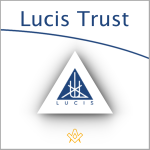 Initiation and the Lucis Trust The approach of the Lucis Trust to initiation may differ slightly to other Western Esoteric systems and Freemasonry, but the foundation of training for the neophyte to build good moral character and act in useful service to humanity is universal. |
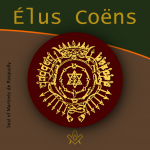 Who were the mysterious 18th century Élus Coëns – a.k.a The Order of Knight-Masons Elect Priests of the Universe – and why did they influence so many other esoteric and para-Masonic Orders? |
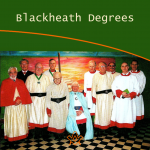 Bro. Chris Hatton gives us his personal reflections on the history of the 'house at Blackheath and the Blackheath Orders', in this wonderful tribute to Andrew Stephenson, a remarkable man and Mason. |
 Book Review - Cagliostro the Unknown Master The book review of the Cagliostro the Unknown Master, by the Editor of the book |
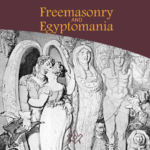 We explore fascinating and somewhat contentious historical interpretations that Freemasonry originated in ancient Egypt. |
 Is Freemasonry esoteric? Yes, no, maybe! |
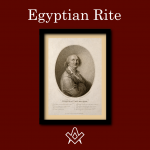 Egyptian Freemasonry, founder Cagliostro was famed throughout eighteenth century Europe for his reputation as a healer and alchemist |
masonic knowledge
to be a better citizen of the world
share the square with two brothers

click image to open email app on mobile device


